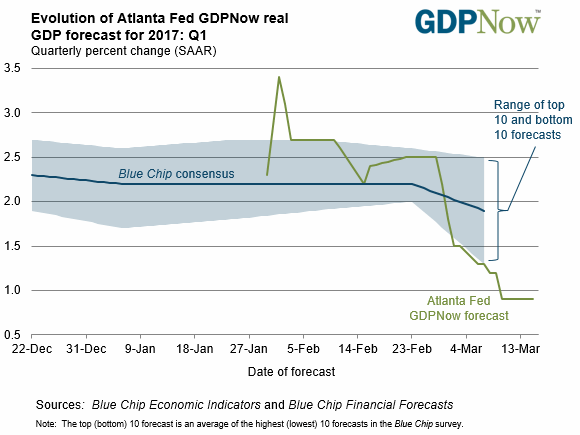The FOMC voted today to raise the federal funds corridor by another 25 bps. It was the third such change and the second over the past three months. Judging by the reactions to it, you would think this is 2004 again. It is not. It is instead perfectly consistent where on a day when the media describes a “strengthening” economy we find instead the usual opposite.
The rate increase comes amid a broad improvement in the world economic outlook and a sense among Fed policymakers that the U.S. economy is close to the central bank’s employment and inflation goals.

This is no mere short-term divergence, as yet another quarter’s worth of output is poised to amount to much less than 2% (as if 2% is an appropriate standard, which it isn’t). Assuming the latest update from the Atlanta Fed’s GDPNow models are even close (0.9%), that would mean Real GDP in the US is below 2% for the sixth quarter out of the past seven, and below 1.5% for the fourth of the last six. That’s an astounding amount of weakness, not just “transitory” weakness but chronic. The last part from the quote above is the only part that is correct, but clearly without realizing the implications for it. As I wrote earlier today with regard to inflation (CPI):
Though Federal Reserve officials may seem to be in rush to “raise rates”, they might appear so only because they more so wish to avoid uncomfortable questions about why it is they are actually doing so. If the public believes there is economic acceleration being forecast just as there was in 2014 and early 2015, then so much the better (for the FOMC) than having to answer for why none is actually forecast even by models that through the whole of the last ten years were blatantly optimistic at every chance. Janet Yellen is no longer worried at all about “overheating”, but she is aided in her avoidance if the CPI if for only a few months gives off that suggestion.











Leave A Comment